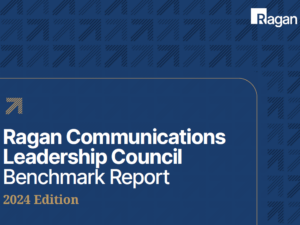A first look at the Barcelona Principles 3.0
The update to the guidelines for measuring your communications programs includes greater inclusion, transparency and integrity.

The Barcelona Principles have gotten a facelift for 2020, five years after the last update in 2015 and 10 years after the principles were first introduced in 2010.
The updates were introduced at AMEC’s 2020 Virtual Summit, in a session led by Ben Levine, director and partner with TRUE Global Intelligence. Levine stressed two key reasons for updating the principles, beyond the obvious reason that it has been five years since the last update:
- A recognition of how the communications landscape has rapidly evolved. “A lot of the practices that existed in 2019 are now dated,” Levine says. “Even practices from 2015 have become less current.”
- To remain the foundational basis on which communications measurement takes place, the principles needed to evolve. Levine says this effort is to make the principles more inclusive for all types of organizations and practitioners.
Here’s what the principles look like for 2020:
Barcelona Principles 3.0
- Setting goals is an absolute prerequisite to communications planning, measurement and evaluation.
- Measurement and evaluation should identify outputs, outcomes and potential impact.
- Outcomes and impact should be identified for stakeholders, society and the organization.
- Communication measurement and evaluation should include both qualitative and quantitative analysis.
- AVEs are not the value of communication.
- Holistic communication measurement and evaluation includes all relevant online and offline channels.
- Communication measurement and evaluation are rooted in integrity and transparency to drive learning and insights.
Breaking down the changes
What were the reasons behind the changes? Let’s go through each principle.
1. Setting goals is an absolute prerequisite to communications planning, measurement and evaluation.
In 2015, the principles said that “goal setting and measurement are fundamental to communications and public relations.” The update takes this idea a step further, Levine says.
By demanding that setting goals is an “absolute prerequisite,” the principles are pushing for PR measurement programs that are built to identify outcomes and measure progress towards those goals.
2. Measurement and evaluation should identify outputs, outcomes and potential impact.
In 2015, the rule stated that measuring outcomes was “recommended.” The update solidifies the principles’ stance on how data must be interpreted to chart a way towards a tangible goal.
“When we are really clear about the audiences we are trying to reach, we are then able to think about the channels we are impacting, the changes we would like to see—and then how that is impacting the organization in terms of the changes we want to see long term,” Levine says.
3. Outcomes and impact should be identified for stakeholders, society and the organization.
In 2015, the principle stated that the effect on organizational performance can and should be measured, a wording that intended to embrace a more holistic view of performance—rather than just something measured in revenue or sales.
The 2020 update continues on that path, embracing changes that have been made in the business landscape as many have adopted a stakeholder model in charting a corporation’s purpose and potential success. It also is more inclusive for work done by NGOs and some government organizations focused on improving lives—and are less focused on profits.
4. Communication measurement and evaluation should include both qualitative and quantitative analysis.
In 2015, this principle stated that measurement and evaluation require both qualitative and quantitative methods. For 2020, the changes were mostly cosmetic.
“We all know that at its core, public relations is about reaching the right audience with the right messaging at the right time,” Levine says. To understand the full impact of your work, Levine says it is crucial that you use the full suite of methods to measure those outcomes.
5. AVEs are not the value of communication.
This is a principle that has been mostly unchanged since 2010. In 2015, the rule was updated from “value of PR” to “value of communication” as a more inclusive term.
For 2020, the rule has been left as is. “We continue to believe that AVEs do not demonstrate the value of our work,” says Levine.
6. Holistic communication measurement and evaluation includes all relevant online and offline channels.
This is perhaps one of the principles that has changed the most since 2010. The original principle stated that “social media can and should be measured.” In 2020, the industry has moved far beyond such a nascent debate.
Now the principle demands a “holistic” approach. “This is ensuring that we think about measurement frameworks, that we are being very clear about what it is we are trying to do on shared media, on owned media, earned media and paid media,” Levine says, “and how they all work together to achieve a common goal.”
7. Communication measurement and evaluation are rooted in integrity and transparency to drive learning and insights.
Th 2015 principle said measurement and evaluation should be transparent consistent, and valid—a sentiment that Levine says still rings true for pros in 2020. However, the principle has been updated to include “integrity,” a nod he says towards concerns about data privacy and stewardship as organizations comply with new laws like the GDPR and try to approach data collection more thoughtfully.
The new rule also tries to send the message that measurement isn’t “purely about data collection.” Transparency requires PR pros to be clear about the tools that are used, as well as examine inherent biases either on the part of the staff doing the measuring—or built-in determinants such as the time period a question was asked.







